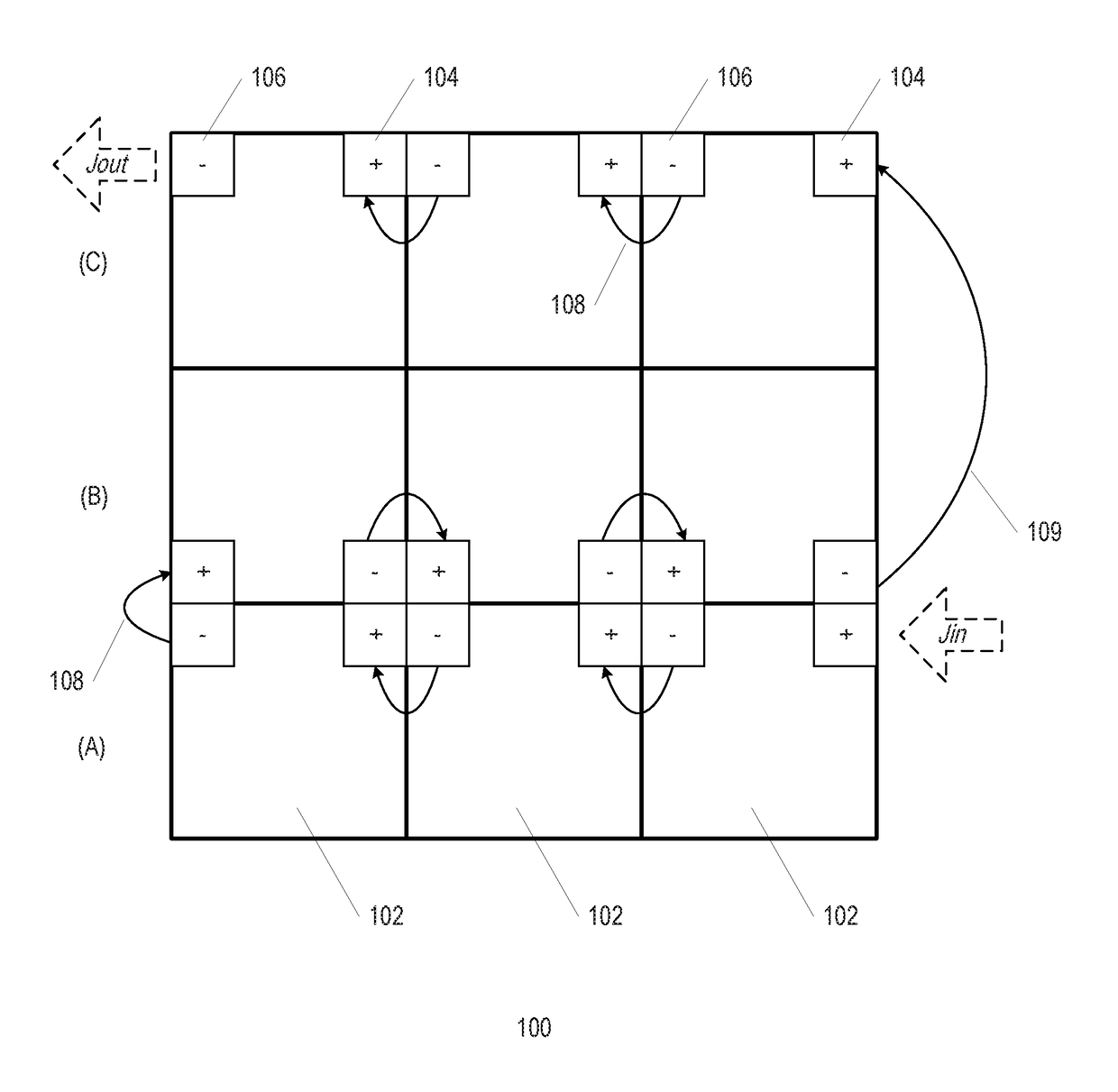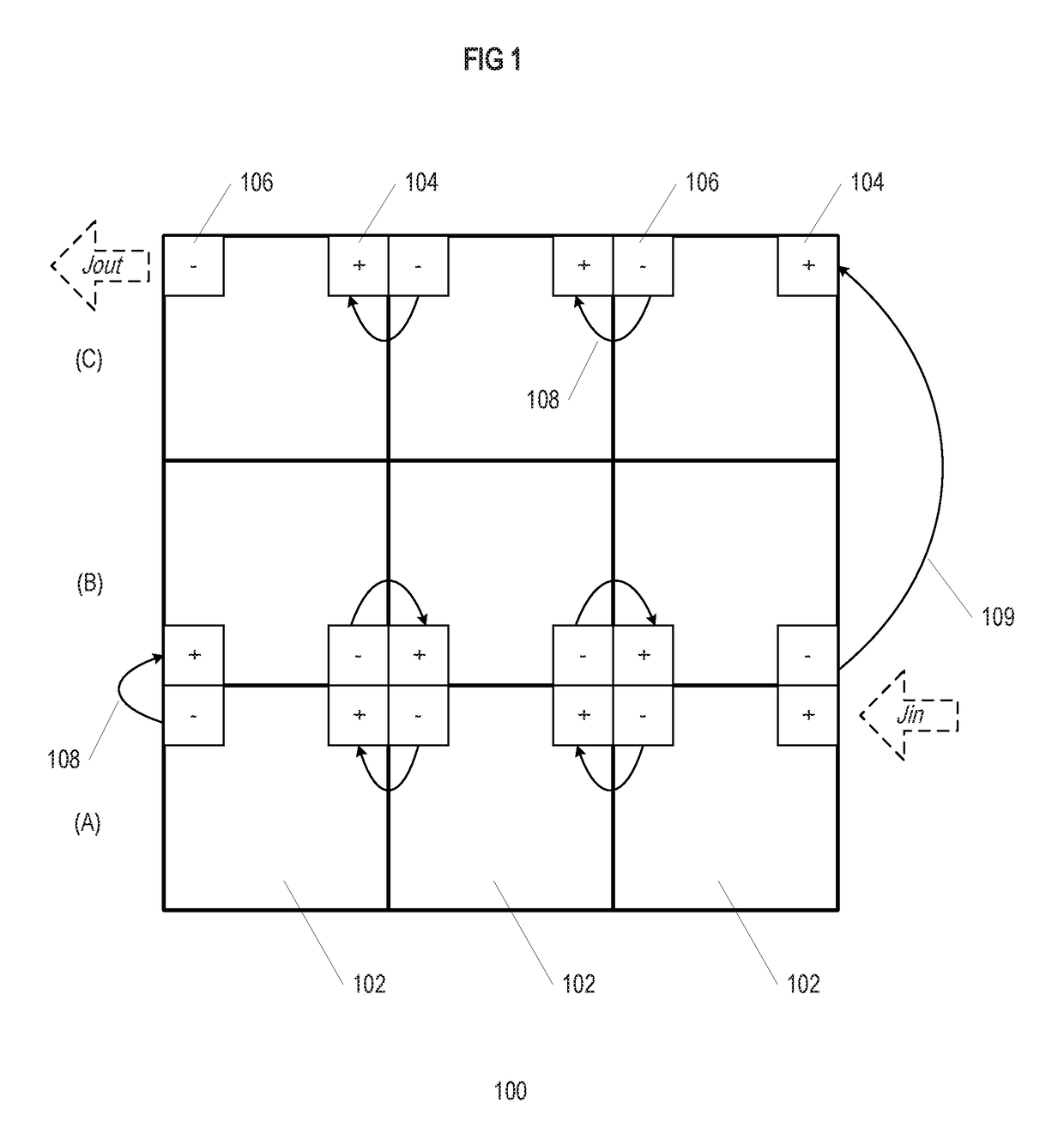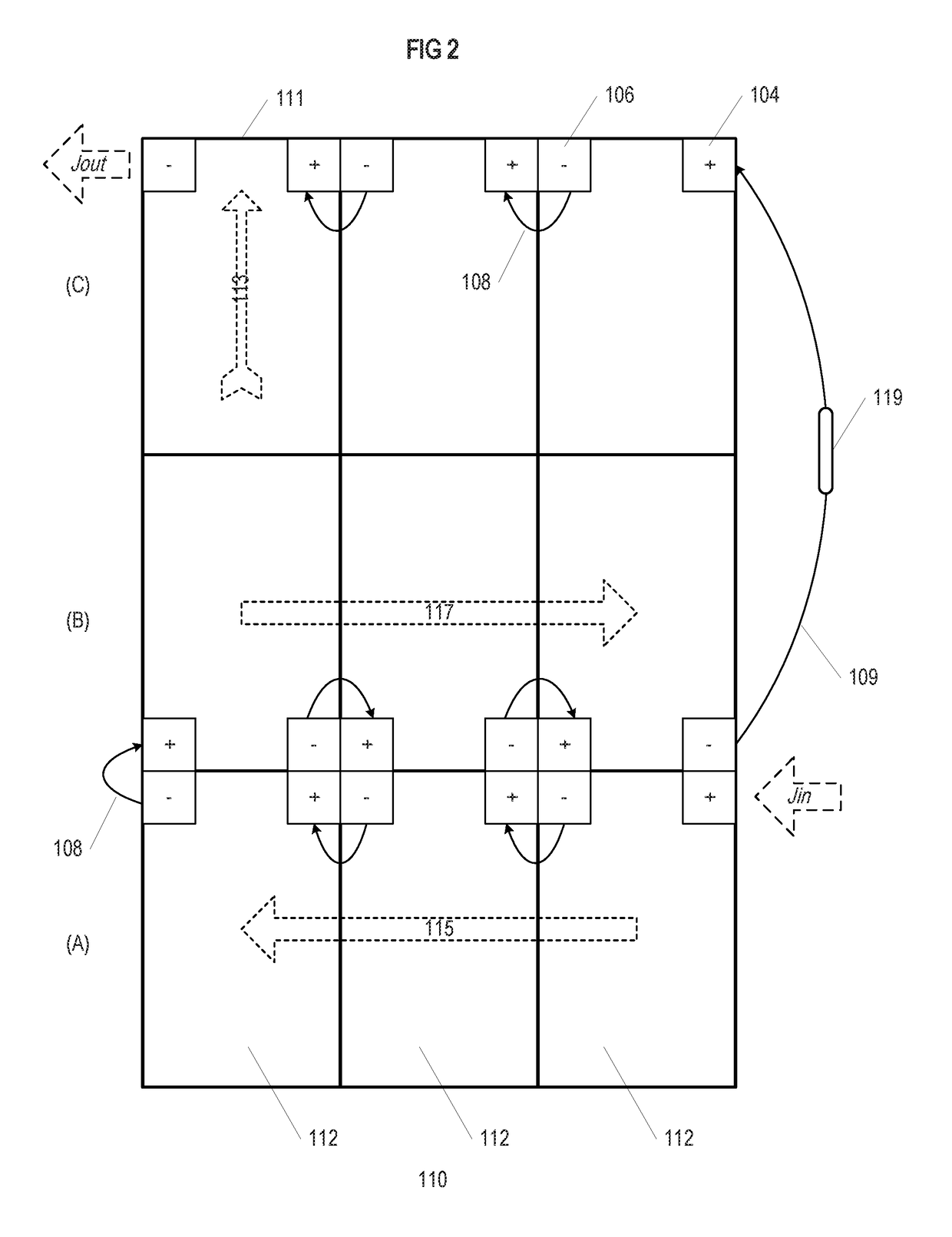Photovoltaic modules with corner junction boxes and array of the same
a photovoltaic module and junction box technology, applied in the field of photovoltaic modules and photovoltaic arrays, can solve the problems of increasing the risk of wire and its insulation breaking, affecting the operation and presenting practical challenges in the management of the pv module wiring, so as to achieve the effect of ensuring connection tension
- Summary
- Abstract
- Description
- Claims
- Application Information
AI Technical Summary
Benefits of technology
Problems solved by technology
Method used
Image
Examples
Embodiment Construction
[0025]Throughout this description for the purposes of explanation, numerous specific details are set forth in order to provide a thorough understanding of the many aspects and embodiments disclosed herein. It will be apparent, however, to one skilled in the art that the many aspects and embodiments may be practiced without some of these specific details. In other instances, known structures and devices are shown in diagram or schematic form to avoid obscuring the underlying principles of the described aspects and embodiments.
[0026]The present invention discloses photovoltaic (PV) modules having separate and distinct positive-voltage (V+) negative voltage (V−) junction boxes instead of traditional combination junction boxes, on the underside or back of the PV module. Traditional junction boxes tend to be located toward the center of a PV module closer to one end, thus wiring connections between adjacent PV modules forming a string of PV modules as part of a solar panel array require ...
PUM
 Login to View More
Login to View More Abstract
Description
Claims
Application Information
 Login to View More
Login to View More - R&D
- Intellectual Property
- Life Sciences
- Materials
- Tech Scout
- Unparalleled Data Quality
- Higher Quality Content
- 60% Fewer Hallucinations
Browse by: Latest US Patents, China's latest patents, Technical Efficacy Thesaurus, Application Domain, Technology Topic, Popular Technical Reports.
© 2025 PatSnap. All rights reserved.Legal|Privacy policy|Modern Slavery Act Transparency Statement|Sitemap|About US| Contact US: help@patsnap.com



